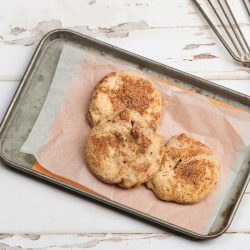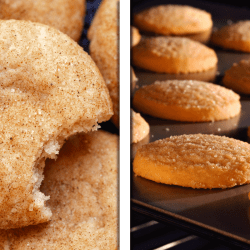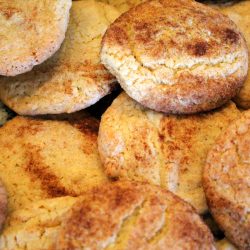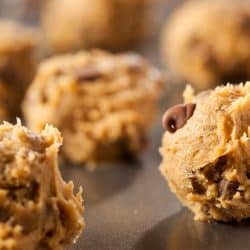Snickerdoodle cookies are a classic and are always a crowd-pleaser. They're similar to a sugar cookie but rolled in a sparkly and delicious cinnamon and sugar coating. Nothing, however, is worse than going through all the hard work of making your snickerdoodles, only to have them come out of the oven thin and flat.
Several factors can explain why your snickerdoodles are spreading and becoming flat during the baking process.
- Cooking your cookies at too low of a temperature
- Overmixing your butter and sugar
- The temperature of the dough is too warm
- Not measuring your ingredients correctly
Keep reading to find out how to make the perfect snickerdoodle and prevent your cookies from spreading while baking. We will offer you some tips along the way to achieving a snickerdoodle with perfectly crisp edges and a pillowy soft center. With that said, let's dive right into this post!
![Overhead view of homemade snickerdoodle cookies with a bite missing - Why Are My Snickerdoodles Flat [And How To Prevent This]](https://kitchenseer.com/wp-content/uploads/2022/04/Overhead-view-of-homemade-snickerdoodle-cookies-with-a-bite-missing-Why-Are-My-Snickerdoodles-Flat-And-How-To-Prevent-This.png)
What Causes A Flat Snickerdoodle?
Believe it or not, there may not be one particular reason why your beloved snickerdoodles are spreading and flattening in the oven. As mentioned above, there are a few reasons your cookies might be falling flat.
Let's explore each reason a little more in-depth.
1. Cooking Your Cookies At Too Low Of A Temperature
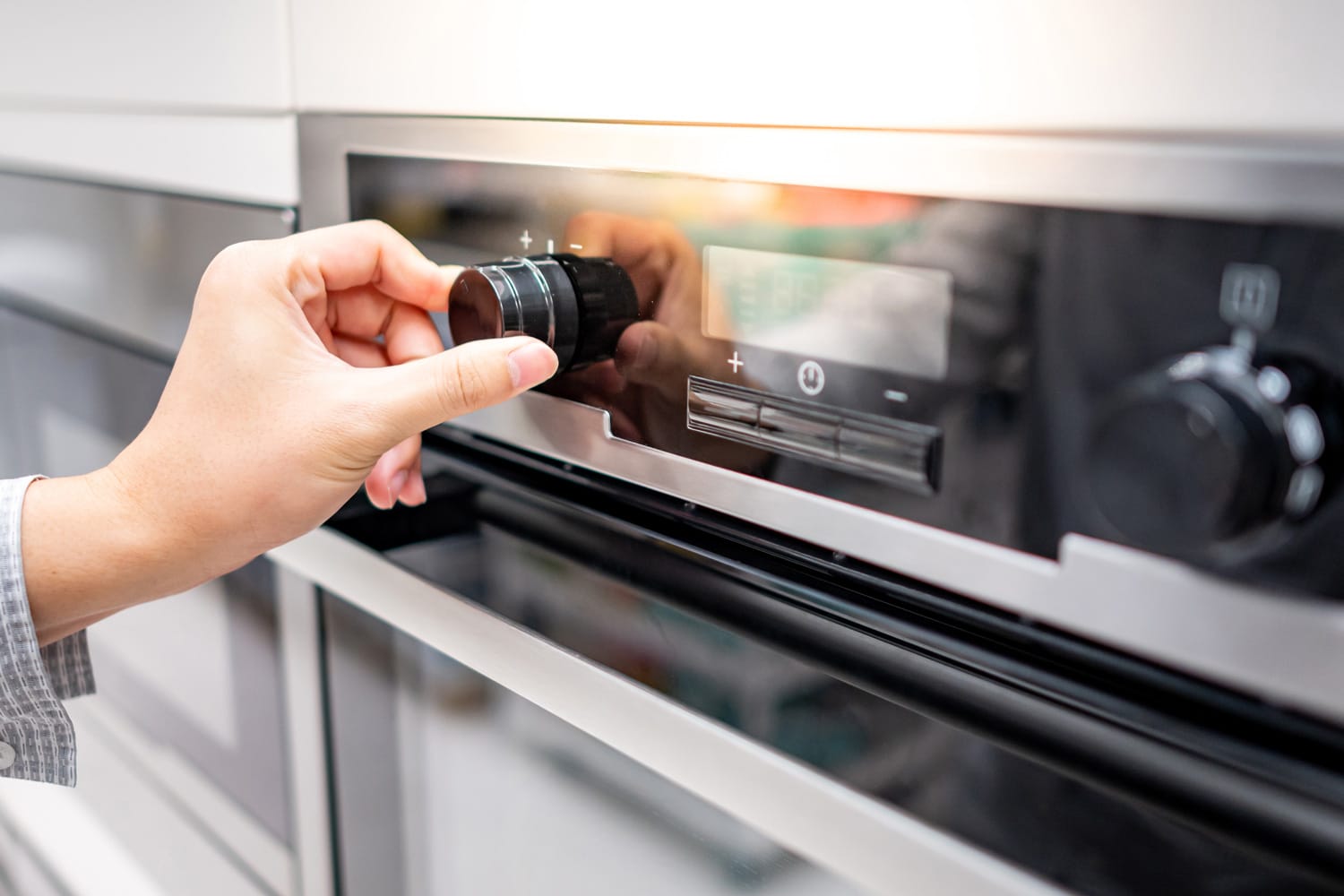
Even if you're following your recipe correctly and baking your cookies at the suggested temperature, that temperature may not be correct for your oven. If you continuously fall victim to flat cookies, you may want to try increasing the baking temperature.
Some ovens may run cooler or hotter than others. If you're not sure if your oven is calibrated correctly, you can follow the directions here to determine if your oven is heating to the right temperature.
Try increasing the baking temperature by 25 degrees. If your recipe calls for the cookies to be baked at 350ºF, try 375ºF instead. If the cookies are baked at a too low temperature, the butter may melt quickly, but the rest of the dough will not have time to set up.
This may result in a flat cookie. A higher temperature will allow all the components to cook faster and set up without too much spreading.
2. Overmixing Your Butter And Sugar
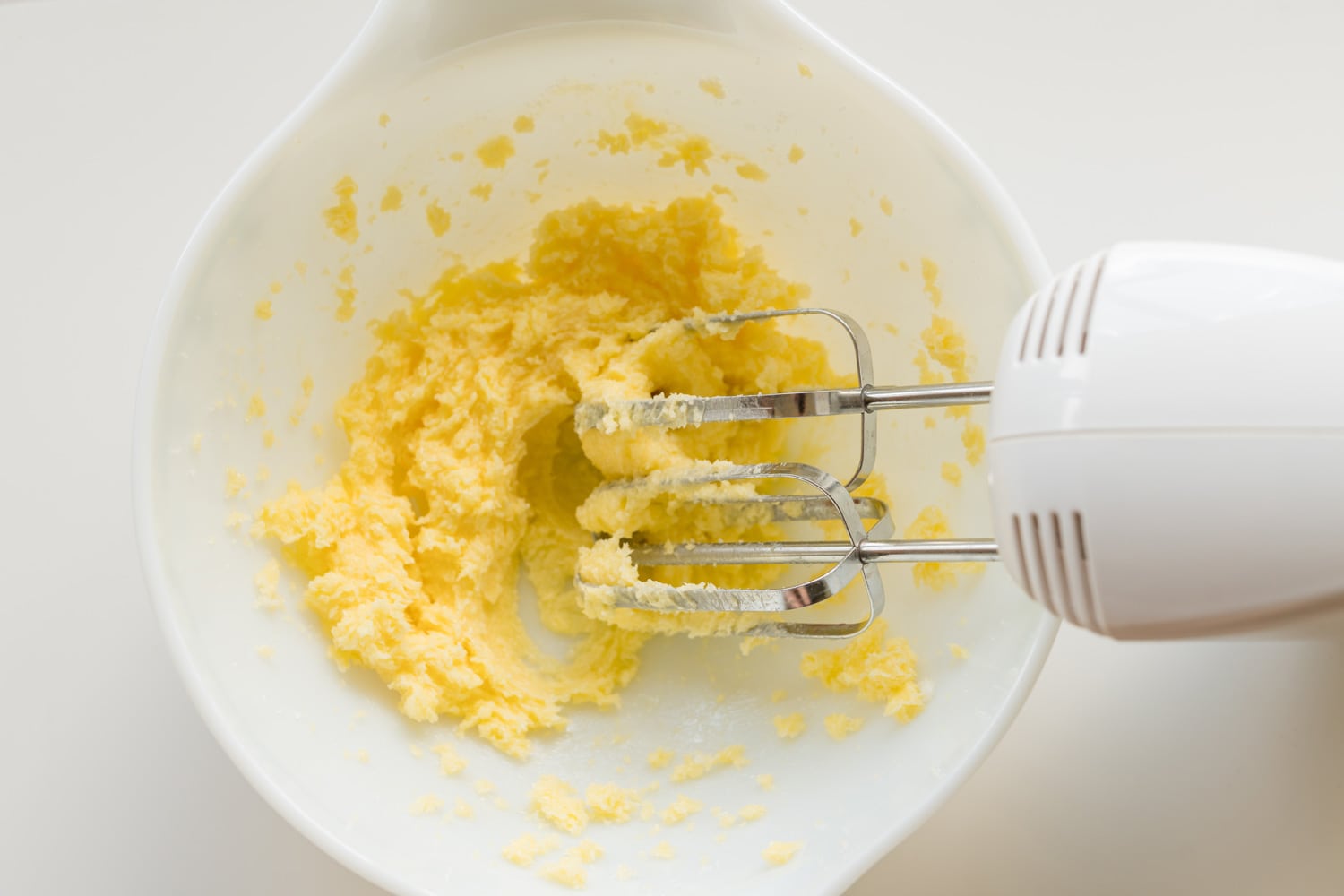
Most cookie recipes will instruct you to cream your butter and sugar together at the beginning of your mixing process. It is vital to thoroughly cream these ingredients together, though overmixing them can cause problems.
Mixing your butter and sugar for too long can overheat the butter, thus causing it to spread in the oven. Finding the right balance may be tricky and can take some practice.
It may be helpful to set a timer and time for how long you are creaming your butter and sugar together. One to two minutes is plenty of time. Additionally, make sure you are scraping down the side of your bowl to ensure your ingredients are properly mixed.
The softness of your butter is also critical. You want your butter softened but NOT melted. Melted butter will be too warm and cause your cookies to spread.
Also, butter straight from the fridge will not easily incorporate into your sugar. To get the butter and sugar sufficiently creamed, you may inadvertently overmix them, causing flat cookies.
3. The Temperature Of The Dough Is Too Warm
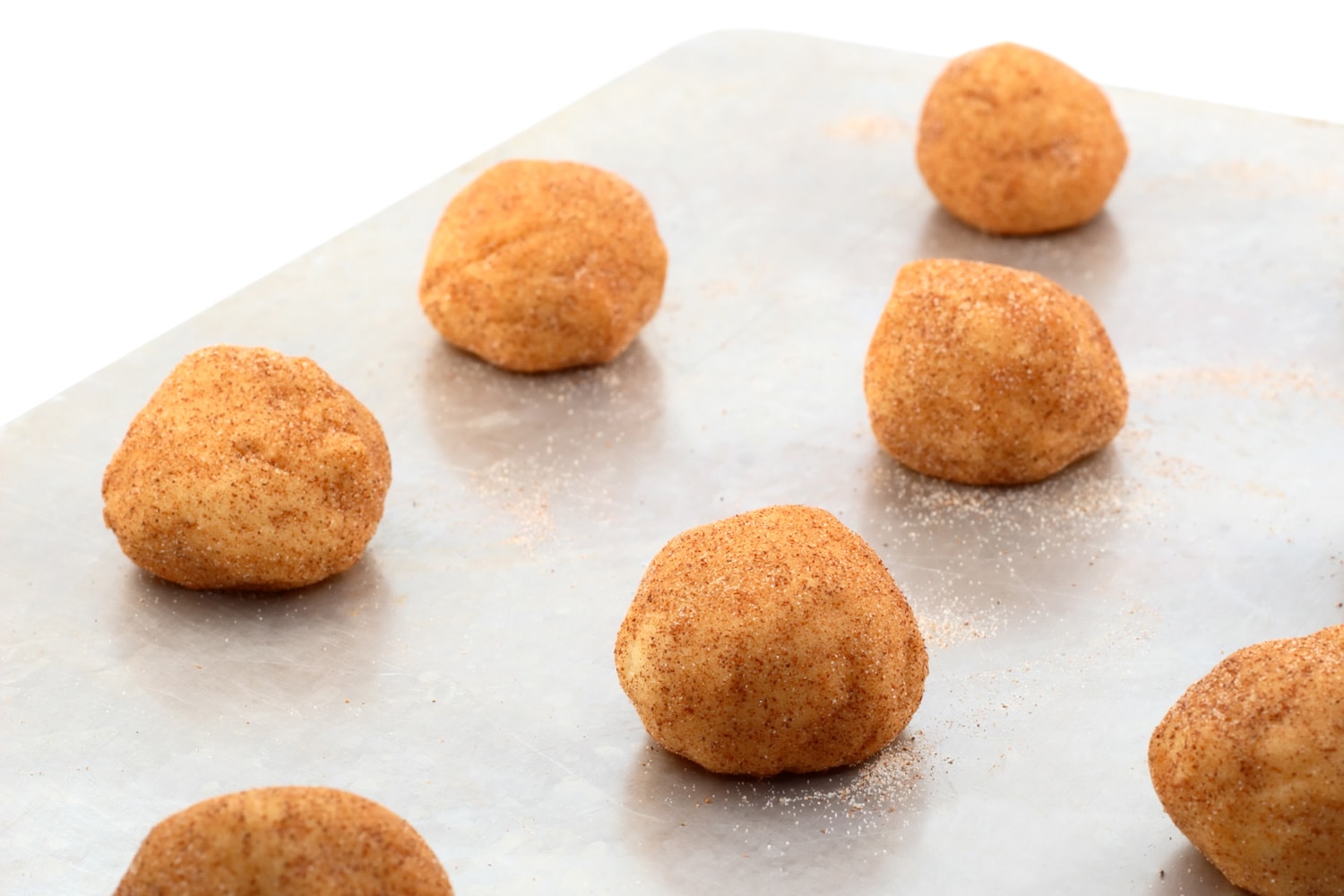
Many cookie recipes will call for the dough to be chilled before baking. Do not skip this step if your snickerdoodle recipe requires the dough to be cooled! You may not want to take this extra time, but taking the time to chill the dough may differ between a fluffy and flat cookie.
Chilling your dough will prevent the cookies from spreading too quickly when they first bake. Your cookies will cook more consistently and will likely have more rise.
One option may be forming your balls, rolling them in the cinnamon/sugar mixture, and then chilling them on the cookie sheet in the fridge.
4. Not Measuring Your Ingredients Correctly
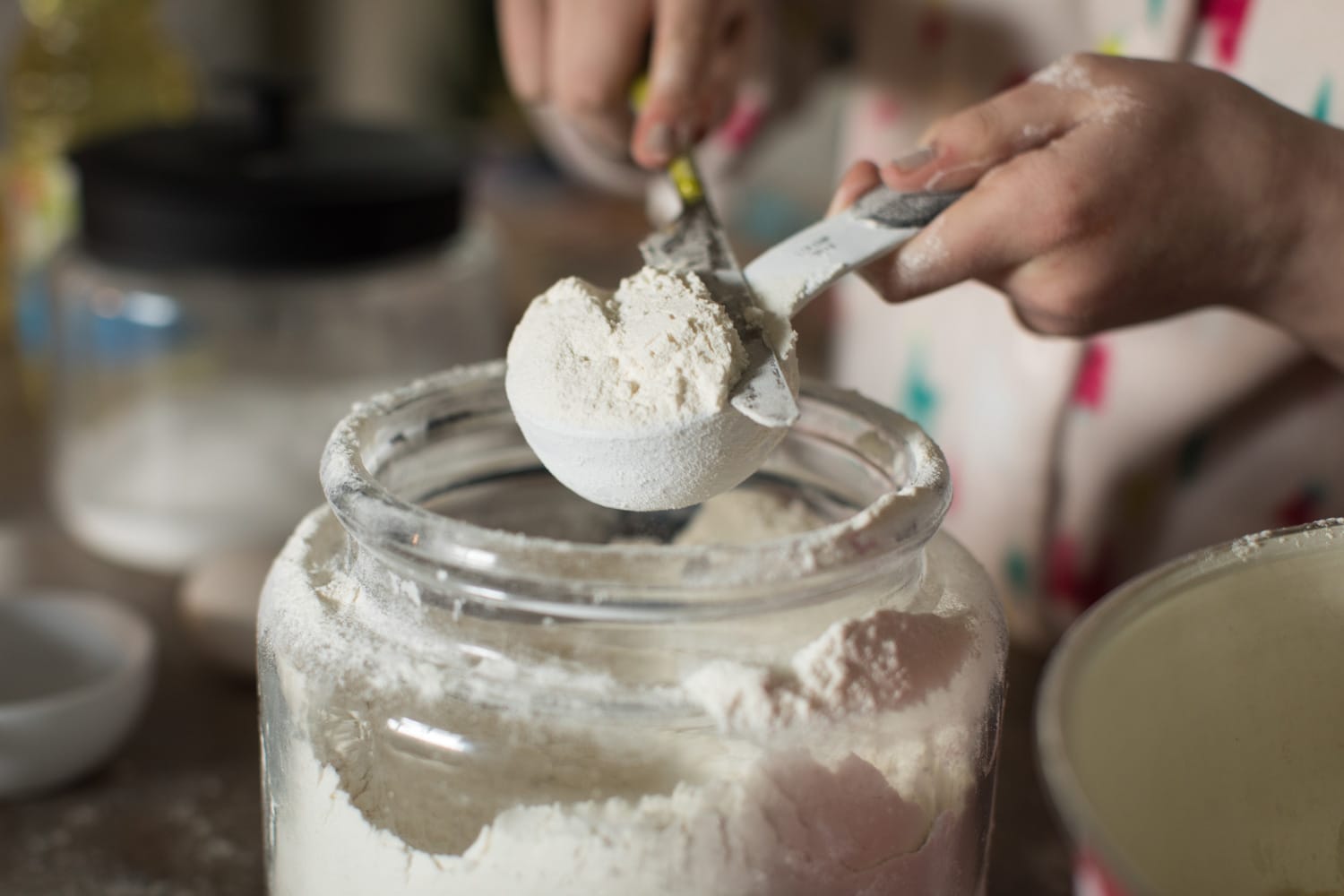
Measuring your ingredients precisely is extremely important in ensuring your cookies become fluffy and not flat. Flour, in particular, can sometimes be difficult to measure accurately. The results will yield a flat cookie if you fail to put enough flour in your snickerdoodles.
Too much flour can cause your cookie to be dry and crumbly. Follow these tips from Love and Lemons on how to measure flour accurately. You can also use a food scale for more accuracy.
You also want to make sure your ingredients are not expired. Expired leavening agents, such as baking soda and baking powder, may not cause your cookies to rise.
How Do I Know When My Snickerdoodles Are Done Baking?
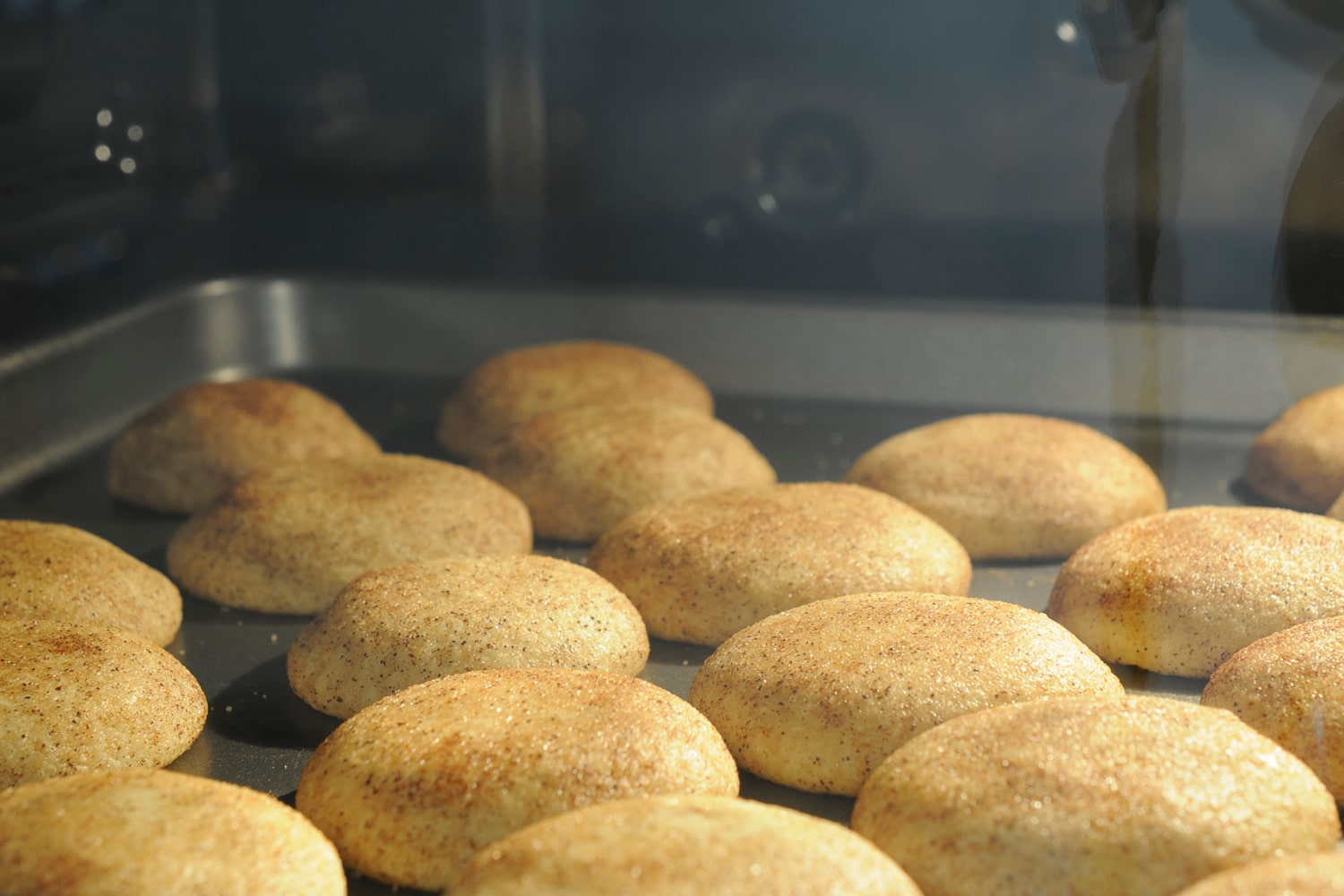
The key to a perfect snickerdoodle is a crispy edge and soft center. It can be difficult to judge when the cookie is perfectly cooked. You don't want a raw center, but you don't want a hard and dry cookie. If you notice your cookie getting too brown, it's overdone.
Cookies will continue to set up after being taken out of the oven if left on the hot cookie sheet. Slightly underbaking the cookies will warrant a softer cookie. If you want to test the cookie's doneness, try to lift the edge of the cookie slightly.
If you can lift the cookie off the sheet, it is more than likely done.
How Should You Store Snickerdoodles?
If you have leftover cookies for some strange reason or you're making a batch ahead of time, storing these cookies is quite simple.
Below are some different options on how to store these delicious cookies.
Storing Baked Snickerdoodles
Place cookies in a Ziplock baggie or airtight container. Do not store them for more than 4 or 5 days as they will begin to dry out and harden.
Freezing Raw Snickerdoodle Dough
Storing raw dough can be done in two ways. You can roll the dough into a log and place it in a freezer-safe, airtight container or Ziplock bag. Alternatively, you can form the dough into balls, roll it in the cinnamon and sugar, and freeze them the same way.
Freezing Baked Cookies
Place the baked cookies in a Ziplock bag or freezer-safe airtight container. Try to get as much air out of your Ziplock bag as possible. The cookies will stay good in your freezer for up to 6 months.
View this storage container on Amazon.
Why Is There Cream Of Tartar In Snickerdoodles?
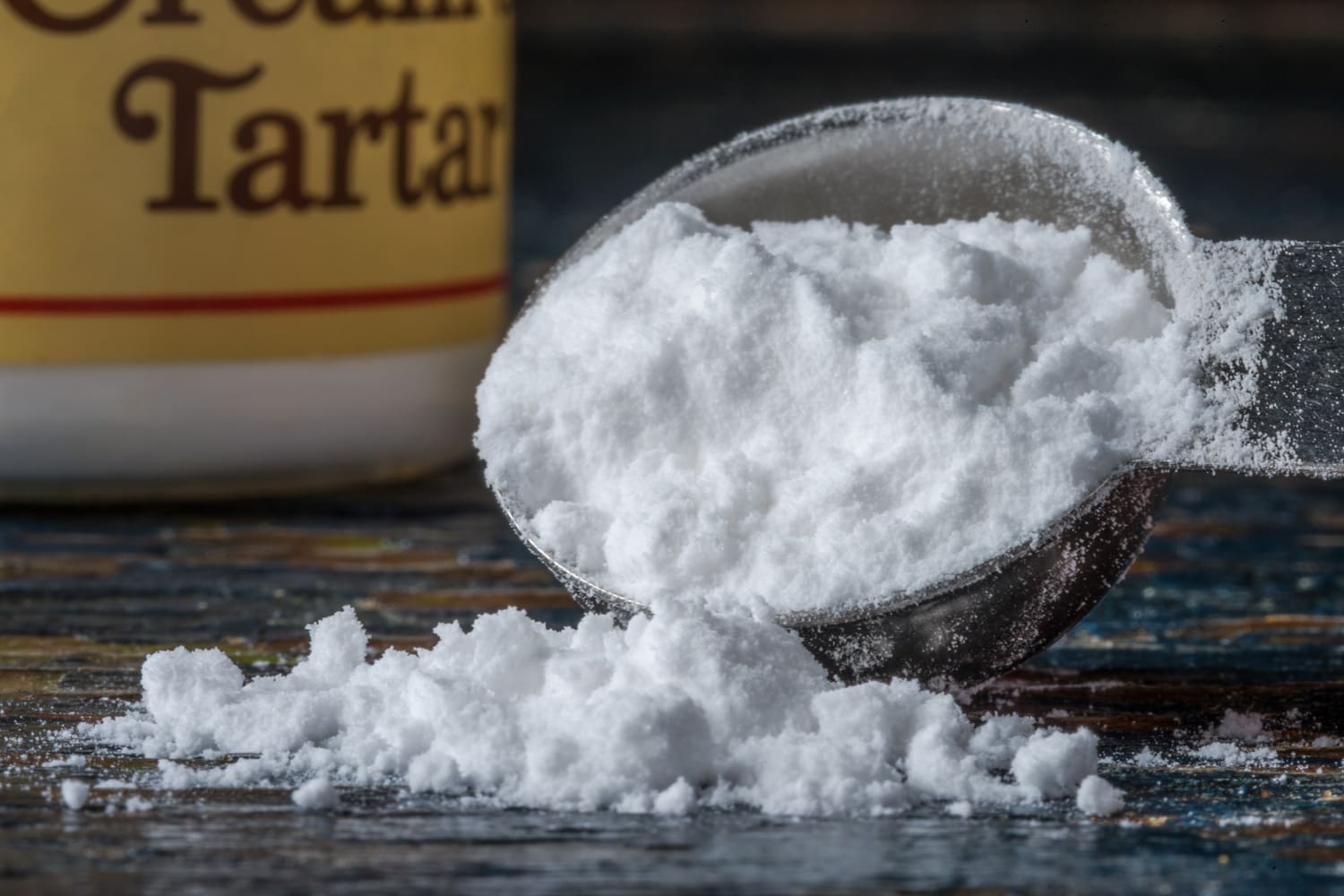
Many snickerdoodle recipes require this odd-sounding ingredient. Cream of tartar is tartaric acid in powder form. It is strangely enough found at the bottom of barrels when making wine. The acid in the cream of tartar gives snickerdoodles their tangy flavor.
This tang is what sets them apart from regular sugar cookies. The cream of tartar, when combined with baking soda, also becomes a leaving agent. It will help your cookies puff right up in the oven.
Cream of tartar also prevents the sugar in the cookie from crystalizing. You can thank the cream of tartar for contributing to the distinctive soft and chewy texture of snickerdoodles.
If you don't have any cream of tartar in your pantry, there are some things you can substitute in its place. Take out both the cream of tartar and baking soda, and use baking powder in its place. Another option is using lemon juice or vinegar in place of the cream of tartar.
To know how much to use, double the amount of cream of tartar that was called for in the recipe. Suppose your recipe calls for 1 tsp cream of tartar, use 2 tsp of lemon juice or vinegar in its place.
To Finish
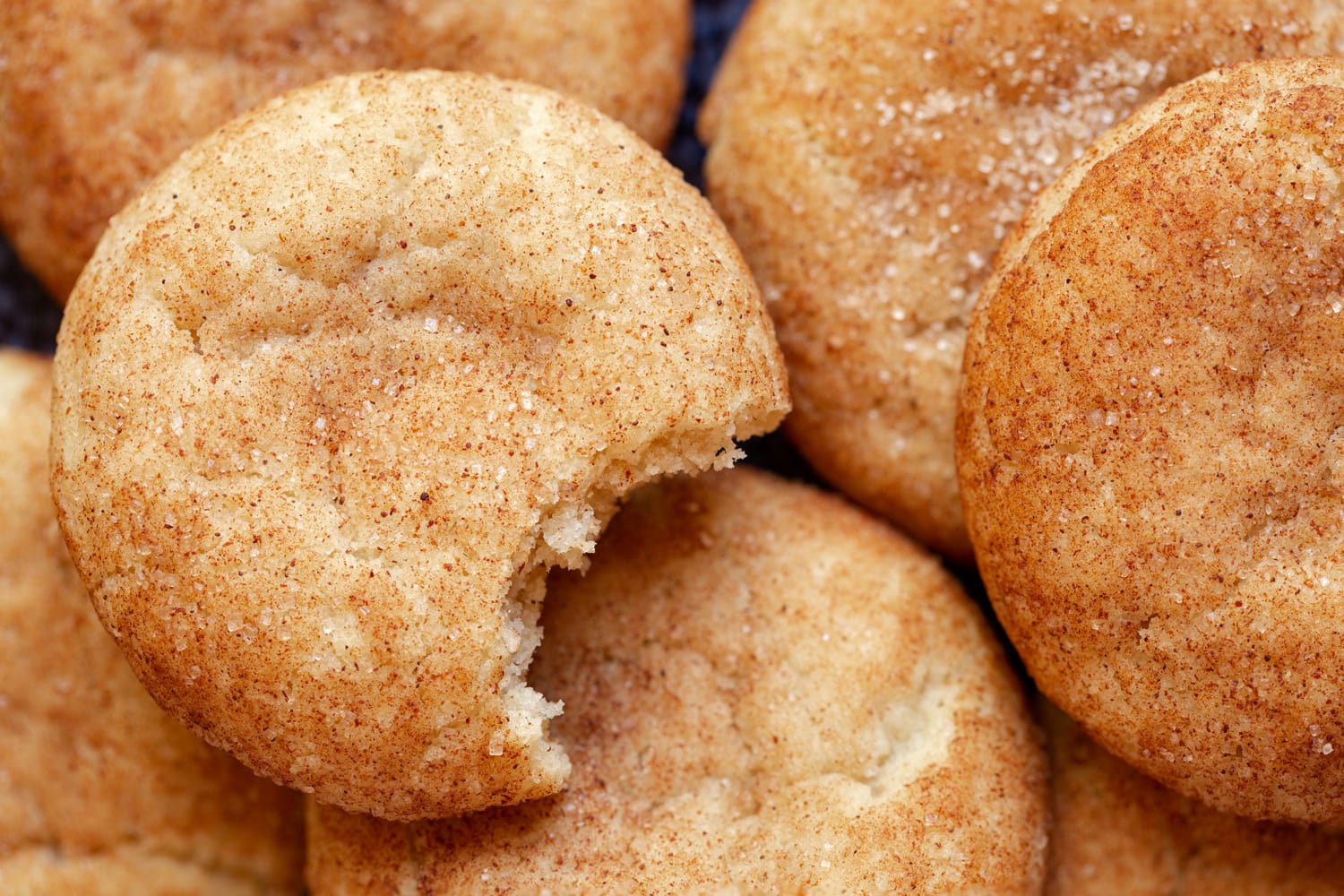
The key to making the perfectly risen snickerdoodles lies in various factors. Perfectly creaming your butter, cooking them at the right temperature, accurately measuring your ingredients, and chilling your dough can all contribute to these cookies being cooked flawlessly.
It may take some practice, but it's oh so worth it. Happy baking!
Made it to the end? Check out these helpful posts below!
At What Temperature Should You Bake Cookies?
Should You Flatten Cookies Before Baking?


